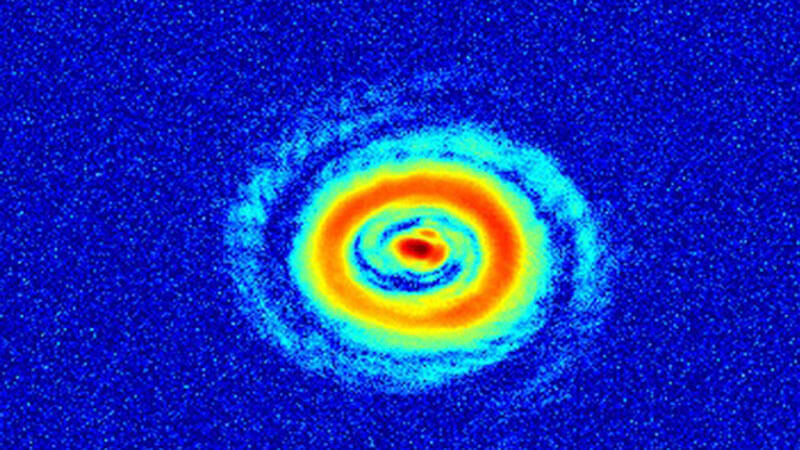Published:

Since Stephen Hawking proved in the 1970s that black holes emit a small amount of energy, now called “Hawking radiation”, scientists around the world and across the decades have tried to accurately quantify just how much radiation black holes emit.
Very complex, convoluted calculations were carried out and, for some types of black hole, resulted in contradictory answers.
Now, scientists from Heriot-Watt University in Edinburgh have developed a new formula to calculate Hawking radiation temperature from any black hole quickly and precisely. The team reported the breakthrough in the journal Physical Review.
Dr Fabio Biancalana explained: “Our formula is extremely simple but very powerful.
“We tested it with all published types of black holes; it always provides the exact Hawking temperature of any black hole.
“We discovered that only the topology of black holes matters when it comes to determining Hawking radiation - not the size, not the electric charge, the spacetime in which they are embedded or how they spin around their axis. Black holes can be physically very different, but if they have the same topology they will emit the same amount of Hawking radiation.
“What our formula does, in simple terms, is to count the holes of a black hole and the spacetime that surrounds it. This information alone is sufficient to determine the Hawking radiation temperature without the need of any calculations.
“What is really surprising is that in our magic formula we only need two dimensions to explain Hawking radiation, one dimension of space and one of time. For years scientists have been theorising about four dimensions and whether space has more dimensions we are still ignorant of. Now we know only two dimensions really matter in the description of all these astronomical monsters.
“This must mean something fundamental about space and time, now we just need to find out what.”
The scientists tested their formula on a range of black holes, whether static, rotating, charged or embedded in exotic spacetimes, and found that it matched calculations done by other researchers in the past using more onerous methods.
Dr Biancalana and his team developed the formula when studying the physics of solitons. Solitons are waves, typically found propagating in water canals and also in optical fibers in the form of light pulses. They have many practical applications in modern technology, especially in laser physics. By studying the thermodynamics of solitons, Dr Biancalana realised that solitons and black holes shared identical mathematical properties, and thus their Hawking radiation follows identical rules.
This finding, already recognised by other black hole experts, not only significantly shortens the calculations required to compute Hawking radiation temperature, but will help scientists to get a step closer to the secrets of what are the ultimate elementary constituents of space and time, and understand whether some or all of the physical dimensions that we perceive are real or just the illusory byproduct of lower-dimensional entities.